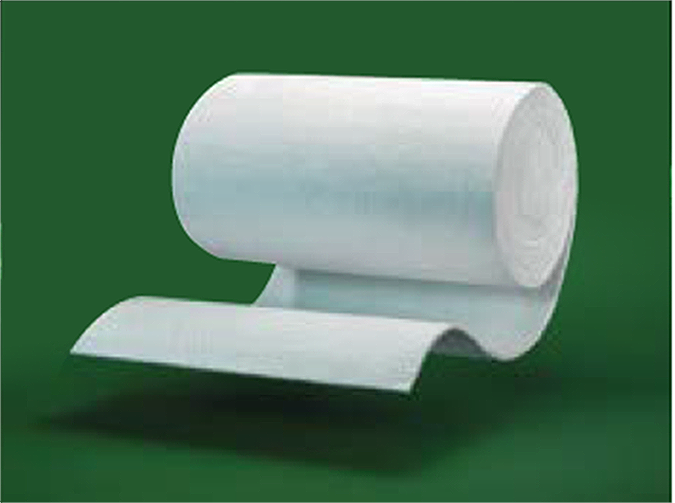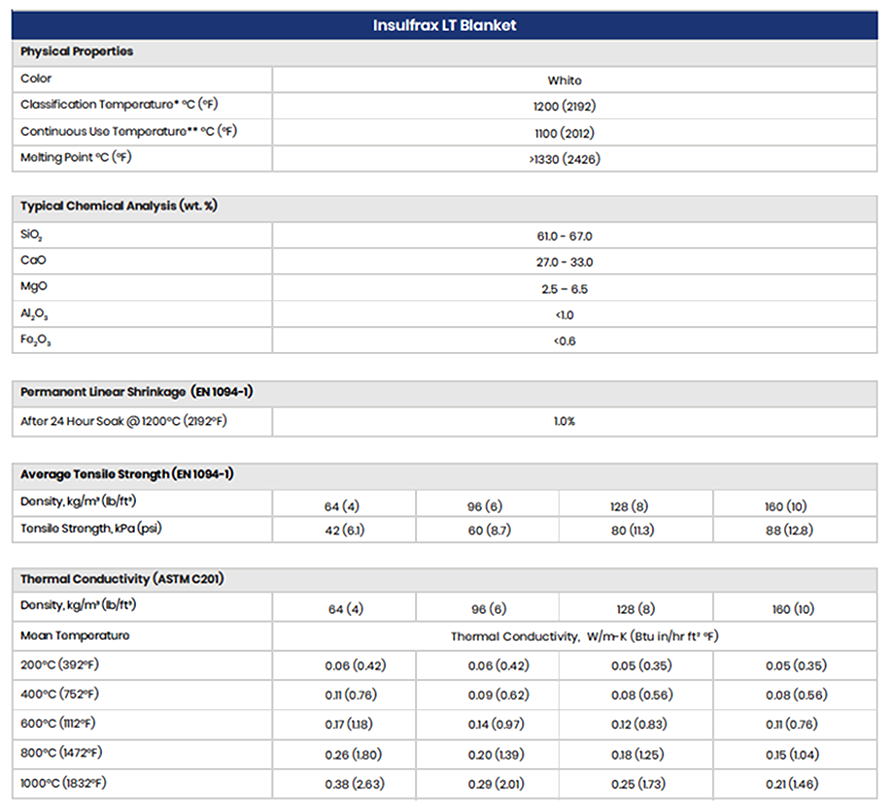
When it comes to high-temperature furnace lining applications, most people are used to using traditional ceramic fiber blanket. This is the itchy white stuff that all your maintenance people complain about. It’s typically seen as a lining for a furnace or maybe just sitting in the corner of your shop getting black stains on it. In recent years, there has been a push toward low biopersistent fiber (LBP). It may also be referred to as body soluble or alkaline earth silicate (AES). If you’re asking, “what the heck does that mean?”, sadly I’m not smart enough to tell you all the complex chemistry behind that. But the key factor/result is there isn’t a warning label on the box. These LBP fibers typically lag behind traditional ceramic fiber in shrinkage ratings at temperature and tensile strength, but they have made strong improvements in recent years. For those who are familiar with LBP fibers, thanks for reading my lighthearted intro, but for those looking for a little more of an introduction, following is a brief recap that we use to discuss LBP with people unfamiliar with the product line.
LBP Insulating Blankets
The use of low bio-persistent fiber (body soluble) insulation as furnace linings has three key benefits. First, they meet any airborne silica requirements; second, they provide a reduced carbon footprint; and, finally, they provide excellent thermal conductivity and thermal shock resistance.
What’s more, they are an excellent alternative to traditional alumina/silica refractory ceramic fiber blankets, especially if a company prohibits the use of respirable ceramic fibers with a warning label. These blankets also have improved tensile strength from previous versions.

The best kinds of LBP insulating blankets for refractory linings, thermal insulation, consumables in steel and aluminum melt shops, molten metal transfer, power generation, and appliances are made from a calcium, magnesium, and silicate chemistry to provide thermal insulation for a classification temperature of 2,192°F (1,200°C). Material characteristics of this needled blanket include flexibility, strength, and light weight. The mechanical needling of the spun fibers eliminates the need for binders during production, which gives the product a high tensile strength.
When considering a thermal blanket, it is also important to make certain the material is inorganic to avoid the generation of smoke or outgassing while in service and that it is available in a range of thicknesses, densities, widths, and lengths. Typical thicknesses are 0.5”, 1.0”, 1.5”, and 2.0” while densities are 4, 6, and 8 PCF (pounds per cubic foot). Widths are generally 24” and 48” and lengths are 12.5’ and 25’. Custom sizes are always available upon request.
Typical applications include:
Power Generation: Heat Recovery Stream Generator (HRSG), duct insulation, gas steam turbines, turbine exhausts, silencer panels, and boiler and duct insulation.
Appliance: Residential ovens, high-temperature commercial cooking appliances, hearth chimney insulation, and high-temperature gaskets.
Non-Ferrous (Aluminum): Aluminum transfer ladle covers, aluminum melting/holding furnace doors, and carbon-backing furnace covers.
General Use & Other Industries (Petrochemical, Ferrous, Pollution Control, etc.): High-temperature furnaces, boilers and fire heaters, backup insulation, high-temperature seals and gaskets, heat shields and maintenance blankets, expansion joints, stress-relieving blankets, glass tank crown insulation, flue insulation, and regenerative thermal oxidiers (RTOs).

The proof is in the numbers
One of the most effective thermal insulating blankets that Chiz Bros. supplies is Insulfrax® LT blanket. Users are pleased with its safety and durability, with the average product lifespan measured in years instead of hours. To get a better understanding of the characteristics of a highly functional thermal blanket see Figure 1, which lists product parameters. The important things to consider when choosing an LBP blanket, depending on the application, are tensile strength, shrinkage rate, and thermal conductivity. To determine the ideal thermal blanket for a production environment, it is best to use a heat flow calculator to help you determine cold-face furnace temperatures with furnace linings of various thicknesses subjected to specific amounts of heat.
In the current industrial landscape, health and safety, as well as reducing one’s carbon footprint, are important factors in every decision. LBP fibers check all those boxes, but the importance of making sure a product fits your unique application can never be ignored. Always reach out to a refractory or high-temperature insulation specialist to discuss any change in material.

























